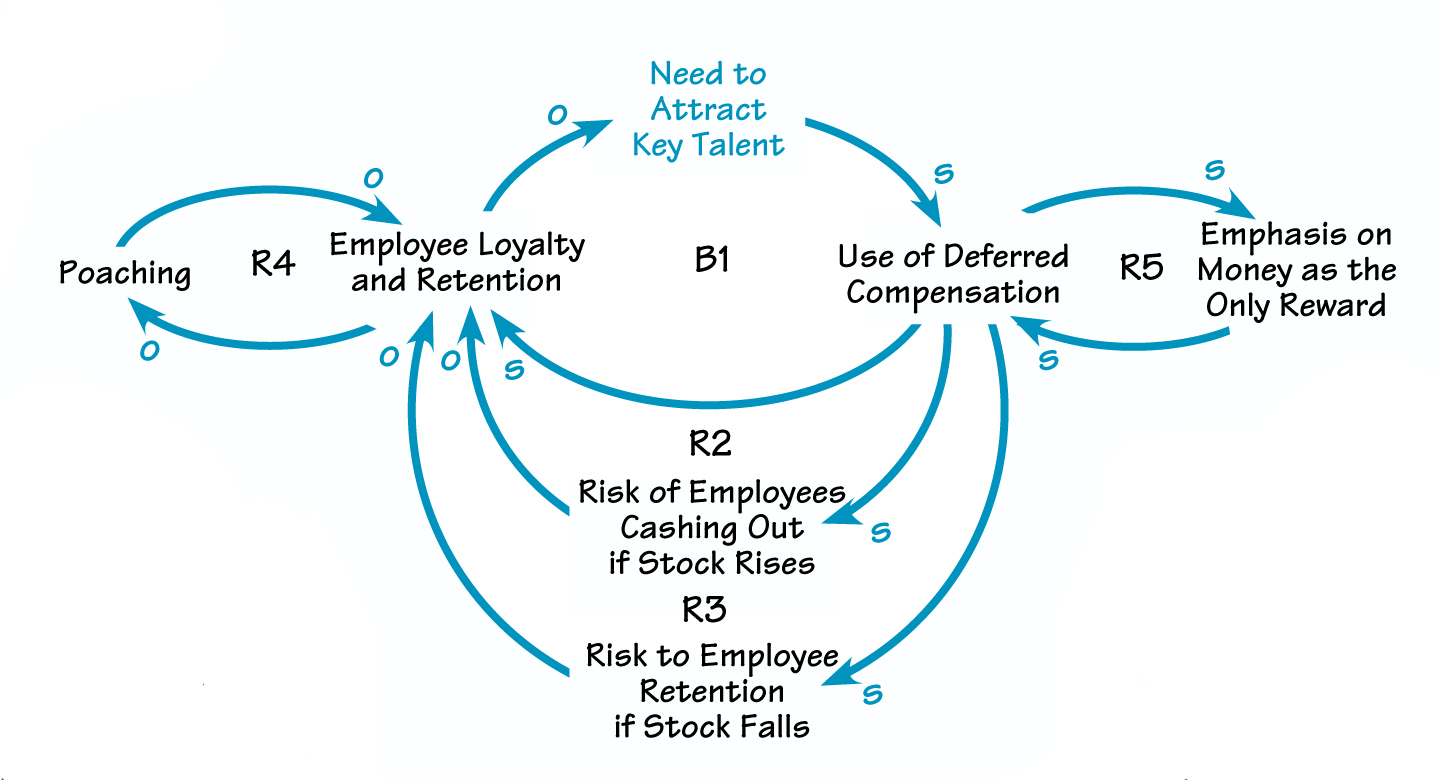In a knowledge economy, a company’s success hinges on retaining and leveraging the skills and knowledge of its employees. Many organizations use financial packages, including deferred compensation such as unvested stock options, to attract and retain people. However, this approach does not seem to be working, and “poaching”—the practice of luring employees away from competitors with more generous offers—is making things worse.
Expanding on the “Fixes That Fail” archetype captures the dynamics of the problem (see “Undermining Employee Retention”). Deferred compensation plans were designed to link employee compensation—and employee loyalty and retention—to the company’s financial gains (B1).
These plans may be successful in the short term; however, in the longer term, compensating with stock options produces unintended consequences. If the stock rises, employees might be tempted to cash out and pursue other interests (R2). If the stock falls, employees might leave for other companies with better compensation packages (R3). These unintended side effects undermine employee loyalty and retention from inside the company. At the same time, poaching undermines them from outside the company (R4). In addition, emphasizing monetary rewards leads to larger packages, which then puts even more emphasis on money as the only reward (R5).
There are several leverage points for breaking out of this dynamic. First, unvested stock options are not an efficient way to link employee and company goals. Many factors besides employee performance cause stock to fluctuate. It is better to tie compensation to specific accomplishments, such as creating a technical innovation or developing new markets.
Second, tying compensation too closely to personal financial gain fails to recognize other intangible motivators. Doing innovative work, gaining leadership skills, earning professional recognition, or making useful contributions to society can be powerful motivators. Combining such intangibles with monetary rewards gives more leverage than using either one alone to attract, retain, and motivate key employees. Third, compensation should emphasize the areas in which the company wants to grow. Reserving the best financial packages for key employees in key areas requires coordination between departments. For example, HR in a telecommunication company awarded bonuses to all of the engineers in a department experiencing high attrition. A few months later, because of shifts in the company’s focus, they actually laid off some of these engineers. This scenario could have been avoided with better communication between R&D and HR.
Undermining Employee Retention

An example illustrates using all three leverage points. A public health research firm currently gives bonuses after employees win grants in new areas, but does not facilitate grant writing. Instead, they could target employees with proven ability to write winning grants and also support them beforehand by giving them time to write, sending them to conferences, and so on. This would be a win-win for the firm and for the key employees: The employees would grow professionally and financially (if their proposals are winners), and the firm would win more grants in promising new areas.
To conclude, there are three leverage points for a proactive approach to limiting the spiral of increased poaching and decreased effectiveness of deferred compensation packages: 1) link compensation to performance in a way that helps fulfill the company’s long-term plans; 2) leverage intangible rewards, such as a supportive work environment and opportunities for professional growth; and 3) be selective with how compensation is used.
—Andrea Shapiro http://www.the-tipping-point.com
